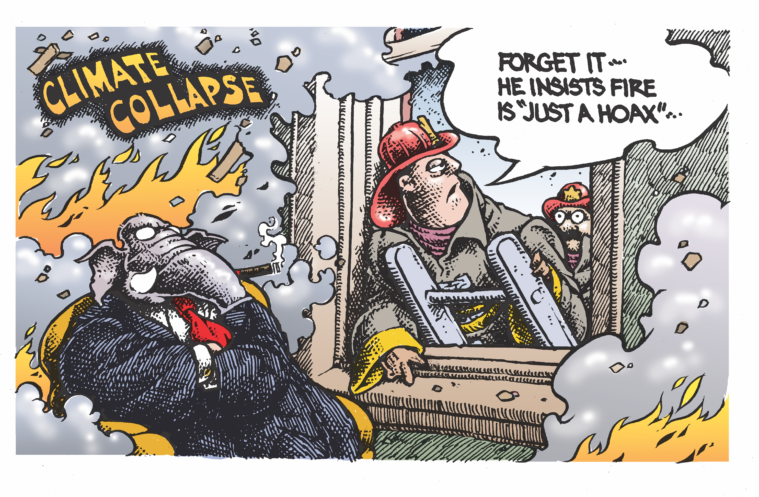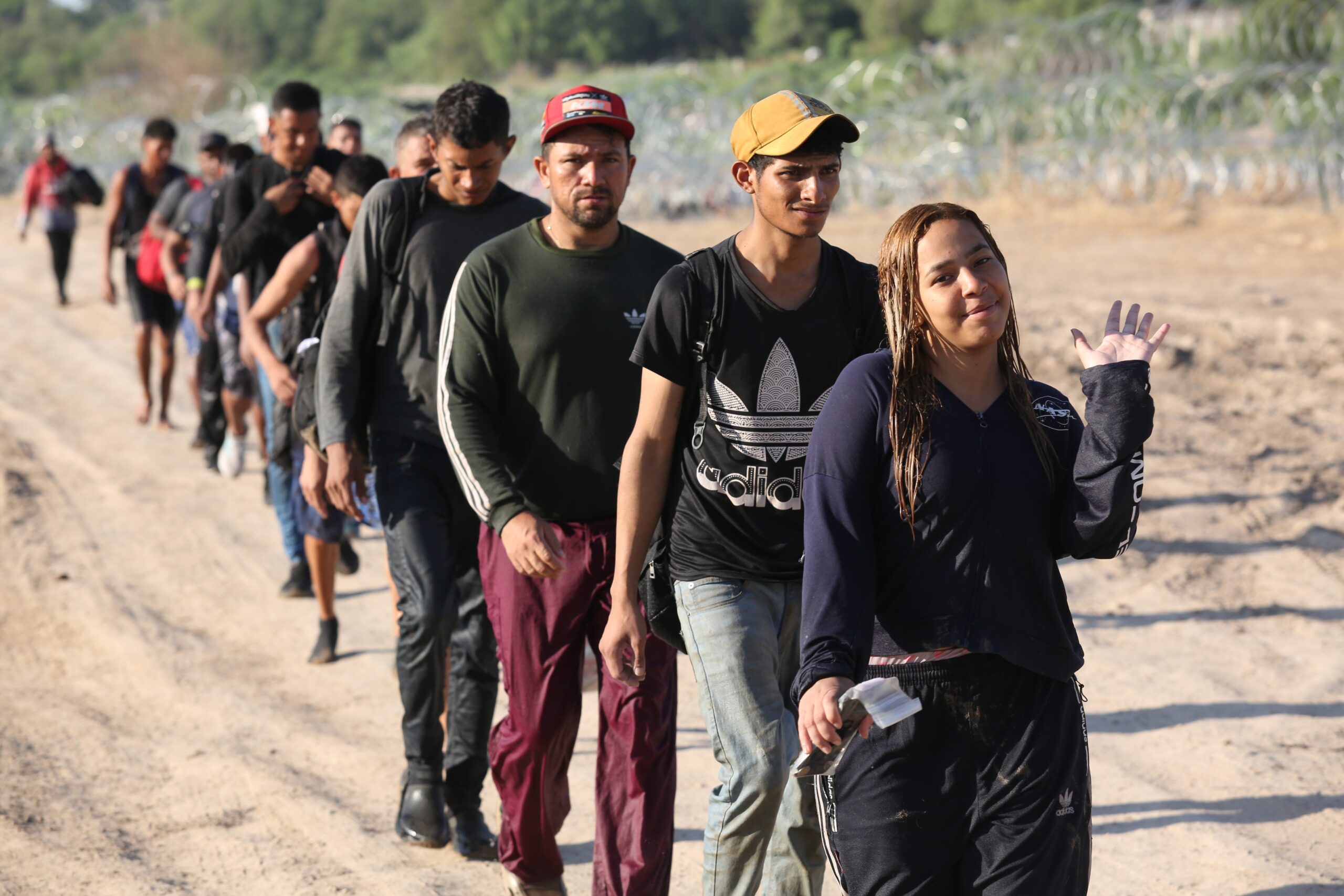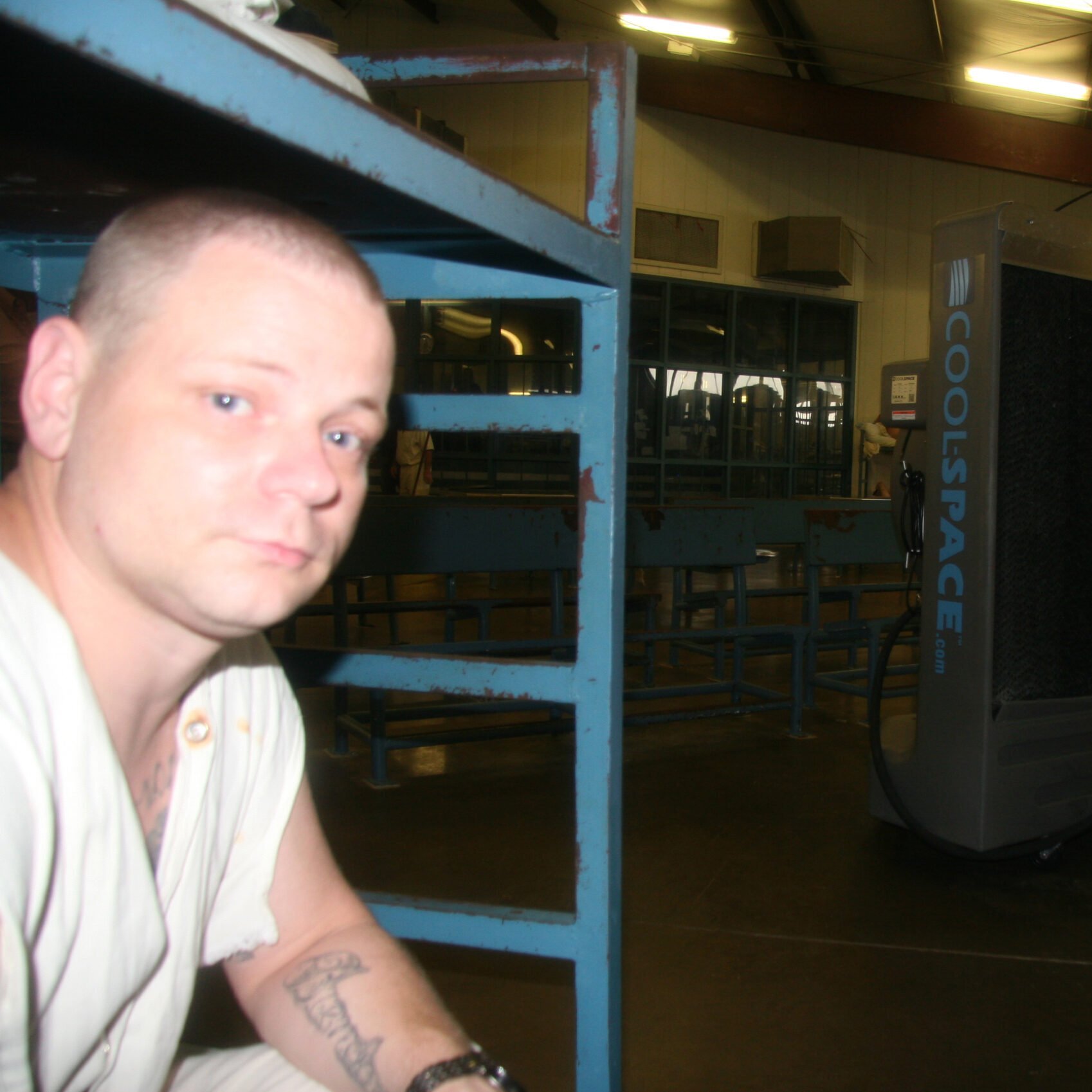This story was published in partnership with The Nation.
Under the formidable sun, Dallas USPS mail carrier Anthony Talarico trudged each day with his satchel, 11 miles over 12 hours, to deliver mail to 750 homes in the Lakewood neighborhood. On September 7, the temperature had hit 107 degrees Fahrenheit. But even after a long shift, Talarico, along with 20 other mail carriers who serve as union stewards of different Dallas-area post offices, came to the local National Association of Letter Carriers (NALC) union hall. In the bright, bare space, adorned with only a few photos and a sign that read “Ring of Honor- Lone Star Branch 132,” the attendees scarfed down pizza and drank Coke and NOS energy drinks to keep alert. Another 26 people joined on Zoom as branch president Kimetra Lewis explained how to document and file grievances, of which there were plenty.
“What we’re dealing with this week is very similar to that day when Gino passed away. It was hot. It was a struggle. We’re now dealing with things with this heat we’ve never dealt with before,” Talarico said.
It’s been three months since Talarico’s coworker, Eugene Gates, died suddenly on a homeowner’s front lawn along his delivery route on June 20 as the temperature reached 98 degrees. Doctors recorded his body temperature at 104.6 at the time he died. The Observer is the first to report that the Dallas County Medical Examiner recently confirmed hyperthermia and artheroslerotic cardiovascular disease, or a thickening of the artery walls, to be the causes of death.
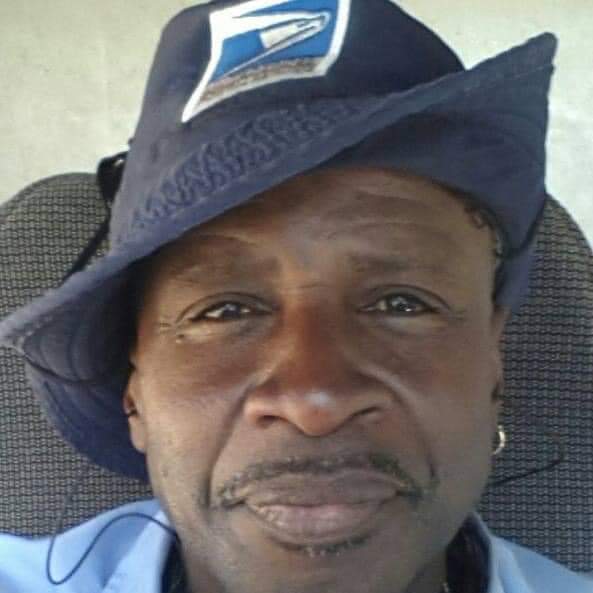
After Gates’ death, the Texas summer only got hotter, bringing a higher risk of heat-related illnesses. Dallas-area mail carriers worked through a total of 54 days of triple-digit temperatures in the summer of 2023, as high as 110 degrees, according to the National Weather Service. Elsewhere it’s been even hotter: 74 days of over 100-degree weather in San Antonio and Austin and 45 days in Houston.
Through interviews and union surveys completed in writing by individual Dallas mail carriers and obtained by the Texas Observer, we found that in the months following Gates’ death, USPS seems to have gone back to business as usual. Mail carriers report that management is still pressuring them to speed up, work overtime hours, and forego breaks. USPS continues to violate the standards of its own Heat Illness Prevention Program (HIPP)—some mail carriers say they have not yet completed training for this program, which would violate the standards of the USPS own HIPP. What’s more, the agency is alleged to have covered this up by doctoring records to show that HIPP training was completed.
USPS’ HIPP program is triggered to go into effect from April 1 to October 31 as well as anytime the heat index—the temperature adjusted for humidity—tops 80 degrees. In Dallas, these days started early this year, in late February. Under HIPP, USPS management must give weekly safety talks, post signs, and send weather advisories to carriers’ scanners with reminders on how to protect against heat exposure with rest breaks and cold water. By April 1 each year, all post offices must also allot work time for mail carriers to complete a required heat illness prevention training online.
According to Talarico, the day after Gates’ death, Dallas Postmaster Daniel Reyes arrived at the Lakewood office and told Gates’ coworkers that a heart attack had killed him. Gates was generally healthy and had never been hospitalized, his wife Carla said. Reyes’ remarks, Talarico said, infuriated carriers, who accused USPS of killing Gates by pressing them to complete deliveries faster without breaks or regard for their health under the threat of punishment.
It wasn’t until after Gates’ death made national news in late June that many post offices rushed to give the safety talks or trainings that should have been completed in April or to post signs or hand out cards outlining the signs of heat illnesses, according to dozens of mail carriers who completed union surveys or who spoke to the Observer.
According to the surveys obtained by the Observer, which were distributed by NALC’s Dallas branch after Gates died, four out of 19 mail carriers at one post office responded “no” when asked, “Are you familiar with the HIPP?” Only one stated he had received HIPP training. At another post office, all 14 mail carriers who responded to the survey stated they had still not received HIPP training as of August 11.
During the September union meeting I attended, 46 stewards raised their hands when asked if they had not completed the HIPP course by April 1. And yet, all 46 raised their hands to indicate that their training records had been marked as complete in their online employee portal called Liteblue. According to the Dallas NALC’s branch president Kimetra Lewis, Gates had never received the training, but his records show that his training was complete on a date that Lewis verified he was not at work.
Since Gates’ death, mail carriers and union representatives say USPS management still persists with practices that are contributing to heat illnesses and other injuries—forcing mail carriers to work overtime and take on more routes, pressuring them to deliver mail faster and forego breaks, rejecting sick leave requests or disciplining them for taking sick leave, and walking back changes the agency made after Gates’ death to start work earlier to avoid longer hours in the extreme heat.
Sixty-five percent of USPS vehicles nationwide still have no air-conditioning—just a four-by-four-inch box fan.
When asked to respond to mail carriers who say USPS failed to follow HIPP standard, USPS Communications Specialist Becky Hernandez said, “Each Area/Region Vice President has a designated coordinator assigned to monitoring compliance with the program.” Hernandez did not directly respond to the Observers’ request to reply to allegations that training records were falsified. “Every employee receives formal training on recognizing and preventing heat related illness,” Hernandez wrote in an email to the Observer.
At the union meeting, Talarico sat across the table from me with his hands in his lap. His ruffled, sandy hair and metal-rimmed glasses framed his sun-worn face. His light blue postal uniform had faded and frayed into tiny holes in the side pocket. The 25-year veteran mail carrier tells me that his body, at 55, is “starting to break.”
His eyes began to well with tears when he told me how grateful he was for residents who are now leaving bottles of cold water on the front porch for him.
“We’re at a breaking point,” he said.

On June 20, Eugene Gates didn’t kiss his wife Carla goodbye. He didn’t want to wake her up too early since it was her first day back to work after her mom had passed. But, like clockwork, ingrained from eight years in the military and a life of labor, Gates woke up at 3:30 a.m., ate breakfast, packed 10 bottles of cold water in a cooler full of ice, and arrived at the Lakewood post office an hour before his shift.
Gates, as always, texted his wife when he got there: “Morning sweetheart, love you have a wonderful day.” A little later, Carla replied, “Good morning baby, love you.” Gates warned her it would be hot that day and reminded her to stay safe if she went outdoors.

After the Juneteenth holiday, mail had piled up. Carriers at the Lakewood post office had four times the amount of mail than typical to deliver, Talarico said. By lunchtime, the heat index had already risen to 105 degrees. Talarico’s skin had broken into a heat rash. Another coworker was vomiting. According to Talarico, others called him to complain about working nonstop in the heat while management had been pushing them to speed up. That month, three carriers had already been disciplined for “stationary events”—what USPS management deems as idling for more than five minutes—Talarico said. A month earlier, Talarico said that Gates had received a letter of warning after returning to the post office to pick up more mail to deliver; on a previous occasion, supervisors had called Talarico to question why he was idling when he was eating lunch.
“We were all struggling, and they were pushing us so hard to not stop,” Talarico said.
Carla didn’t think much of it when she didn’t hear from Gates at lunchtime as usual. He sometimes skipped lunch so he could finish his route on time. Gates was so punctual that one resident, an autistic child, would wait for him on the front porch at the same time every day. Gates’ customers told Talaricio, “You could set your clock by Gino.”
But around 3:35 p.m., Gates had collapsed in front of a home in the Caruth Terrace neighborhood in northeast Dallas. The homeowner performed CPR. According to city records, the fire department arrived five minutes later and brought Gates to Texas Health Presbyterian Hospital. According to medical records, his body temperature was 104.6 when he reached the hospital. The hospital called Carla at 4:45 p.m. As she rushed to the hospital, she received a second call, this time from the chaplain who said she would talk to Carla when she arrived. That was when Carla knew Gates had already died before she got a chance to say goodbye.
It wasn’t until nearly a week later, when Gate’s story made national news, that someone from USPS finally returned Carla’s calls.
“They did not reach out to me. They did not send a card. They did not send flowers. The postal service did not send anything. Any support I received was from the union, his coworkers, and residents around the country,” Carla said. “That’s how they treat someone after 36 years of service.”
Gates is the seventh documented USPS mail carrier to die from heat-related illness since 2012 while on the job, according to the Observer’s analysis of federal Occupational Safety and Health Administration (OSHA) records. The number of deaths may be higher since neither medical records nor OSHA always cite whether heat stress might induce other illnesses. Since OSHA first cited USPS for exposing Independence, Missouri mail carrier John Watzlawick to heat hazards on July 24, 2012, USPS has been slow to make changes to protect workers.
USPS MAIL CARRIER HEAT-RELATED FATALITIES 2012-2023 (source: OSHA)
- July 24, 2012, Independence, MO: John Watzlawick died delivering mail when the temperature hit 102 degrees.
- July 6, 2013, Medford, MA: James Baldassarre died from a heat stroke. The temperature was 94 degrees; the heat index was 117.
- July 11, 2017, Charleston, WV: Ronnie Bowles died after experiencing heart problems induced by heat stress. The heat index was 88.
- July 6, 2018, Woodland Hills, CA: Peggy Frank died in a non-air-conditioned mail truck. The temperature hit a record-setting high of 115.
- July 22, 2020, Washington, D.C.: A mail carrier died in a non-air-conditioned vehicle. The high temperature was 94 degrees, and the heat index was 104.
- June 17, 2021, San Jose, CA: Dalvir Bassi died from a heat stroke. The temperature was 94 degrees.
- June 20, 2023, Dallas, TX: Eugene Gates died when the temperature hit 98 degrees with a heat index of 116.
After Watzlawick’s death, USPS agreed to a limited heat-illness prevention program that would only include Independence, Missouri. The program wasn’t instituted nationally until May 2018. By then, 62 more USPS carriers around the country had been hospitalized for severe heat-related illnesses, according to the Observer’s analysis of OSHA records. At least two others had died.
In the summer of 2020, mail carriers were dealt a blow after USPS won an administrative law judge decision that overturned an OSHA penalty of $511,000 for five heat-related injuries. Without a specific OSHA standard for heat safety, judges decided that the mail carriers’ unprotected exposure to extreme heat did not qualify as a “hazard likely to cause death or serious physical harm” under OSHA’s general duty clause, which requires employers to provide general protections for a safe workplace.
But, according to OSHA records, from 2015 to 2022, heat-related injuries accounted for 173 of 1,200 severe injuries—16 percent—among USPS carriers that required hospitalization. This does not include the heat illnesses experienced by mail carriers during the extreme heat this summer. According to the data, Texas mail carriers experienced the most hospitalizations from work-related heat illnesses. The state had 28 recorded incidents, compared to 10 in Nevada, which came second.
Notably, even though USPS is not the largest employer in the United States.—it employs roughly half the workers at Walmart, Amazon, or McDonald's—its workers reported the highest number of severe workplace injuries overall, 1,200 over that same time period.
After years of resistance by business lobbyists, OSHA finally began developing a heat safety standard two years ago. Progress has been slow, but protests by workers, unions, organizations, and elected officials—like Texas Congressmember Greg Casar, who staged a thirst strike this past summer—have recently spurred the Biden administration to ramp up enforcement of heat-related workplace protections.
The Observer found that USPS, on the other hand, continues to resist these efforts.
In early July, U.S. Representative for the Dallas area Jasmine Crockett, Representative Jamie Raskin, Representative Greg Casar and 12 others initiated a congressional inquiry into USPS’s measures to protect its workforce from extreme heat. Casar, with other local representatives, also sent a separate letter to USPS Postmaster General Louis DeJoy calling on the agency to allow mail carriers to be able to return to their post office or deviate from their route to obtain cold water, without receiving disciplinary action. According to communication the Observer reviewed between Casar and USPS District Manager Tom Billington, USPS refused to agree to the request, and wrote instead, “If they can’t find water [along their route], they should contact their supervisor for assistance and to discuss alternative solutions for hydration. This past summer, San Antonio branches stopped providing cold water to mail carriers.
“The way that USPS has treated San Antonio letter carriers during this summer’s heat wave is inexcusable,” said Casar. “They have been misleading to members of Congress, gone back on their word, and created a dangerous working environment."
In responses to both the congressional inquiry and to Casar, USPS government relations representative Ashley Motta sent a letter touting HIPP’s provisions, which mail carriers say USPS is flouting.
“We found out that they were falsifying all our documents.”
“It's apparent that there is a significant number of locations that did not complete the training and there's also a sizable number of discrepancies in terms of what USPS’ records show. It shows that the training was completed, but it wasn't and that's something we're in the process of correcting,” said NALC President Brian Renfroe, who added that the union is also calling on USPS to update HIPP to include heat acclimatization measures.
"I was on vacation, and when I was looking at my records on Liteblue (the online portal for postal employees), it showed I did some additional training on my day off, but that never happened, and on Sunday, which also never happened,” one union survey respondent said.
Another wrote that her training was marked complete when "I just came out of the hospital and was on bed rest for 11 weeks."
One other mail carrier wrote her training was marked complete when "I was out recovering from a heart procedure because I received a LOW [letter of warning] for attendance because of my absence.”
Homer Hernandez, a USPS mail carrier of 20 years and legislative chair of the San Antonio branch, said many mail carriers in San Antonio also reported their records were falsified.
“We found out that they were falsifying all our documents by stating we took all the safety training classes they're supposed to be providing us when it never happened,” Hernandez said.
Gates never took the HIPP training this year. He had been absent on January 25, when it was administered at the Lakewood post office. But, like others, his training record was also marked as complete.
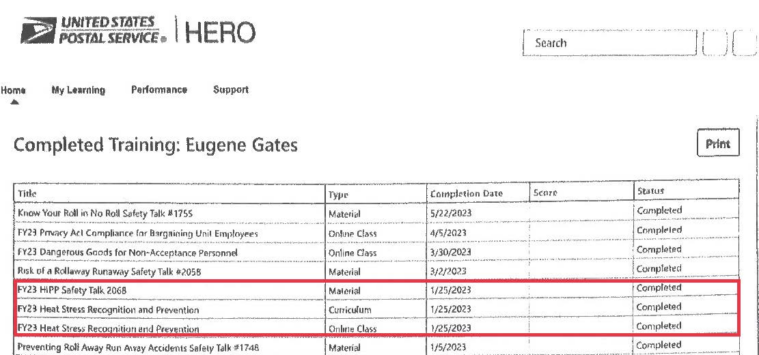
For USPS, “nothing comes above the numbers,” wrote one mail carrier.
At the start of the pandemic, USPS paid the Zebra Technologies Corporation $570 million to provide 300,000 of its TC77 model as their new Mobile Delivery Device, scanners that allow for “real time tracking” of packages and carriers.
The company boasted, “The ultra-rugged TC77 features Zebra’s Mobility DNA suite of software tools that increase worker productivity, simplify management and strengthen the security of Zebra’s Android-based, enterprise-class computers.”
The devices are connected to USPS’ Regional Intelligent Mail Server, or RIMS, which allows management to track a carrier’s progress on their delivery route at all times. At the start of a day, carriers discuss with management how long a given route will take. Typically, they cannot deviate from that route. If a carrier is stationary after a few minutes, a red blinking sign on the RIMS system will alert management that the carrier is “idle.” If mail carriers take longer than the estimated time, they may be disciplined for “unauthorized overtime.” If they “idle,” they may be disciplined for “stationary events,” although Renfroe says this often violates the workers’ contracts.
“Determining each carrier’s progress early in the afternoon will allow the supervisor to know which carriers are behind schedule and take appropriate action,” the USPS’ Office of Inspector General wrote of the Mobile Delivery Device system.
Texas’ NALC leaders from Dallas, San Antonio, and Killen say that before Gates died, carriers were routinely disciplined for “stationary events” when they sought breaks from the heat. Even though the online HIPP training course tells carriers to “slow down the pace” or “shorten the duration by taking frequent breaks as needed,” USPS management regularly sent carriers warnings on their scanners saying “keep moving” or “hurry up to beat the heat.”
“If a carrier is found to be idle, not moving for about 10 minutes, then management wants to know why. They feel like it's excessive. We, on the other hand, as the union is concerned, have told them to take as many conferences [breaks] to make sure that their health is protected. But the Postal Service frowns upon that,” NALC’s Dallas-branch 132 president Lewis said.

After a verbal warning, USPS management will escalate disciplinary measures to a warning letter, a seven-day suspension, a 14-day suspension, and then removal. The system discourages carriers from taking breaks, even when their bodies need to cool down. The timing is critical. Without immediate attention and rest, extended exposure to heat can result in nausea, dizziness, and fainting, which when left untreated can lead to a breakdown of the kidneys and other organs, and then death. According to union grievance records, mail carriers were also disciplined for taking leave when they did get sick.
After Gates died, management started sending warning messages to mail carriers’ personal phones instead of scanners. Killeen’s NALC Branch 4217 President John Darden said carriers received text messages, such as, “What’s taking you so long?,” “You should’ve been done by now,” and “Why are you still there?”
Darden said there have been nine heat illnesses among Killeen mail carriers since Gates died. Heat stress induced one carrier’s heart attack. Another mail carrier’s kidney failed from heat exhaustion after he had received a transplant a year prior. He’s been out sick for a month now.
Even with all the illnesses, USPS moved the start times for the Killeen mail carriers back to 8:30 a.m. September 9, when temperatures topped 104 degrees.
“They just don’t care,” Darden said.
Dallas-area mail carrier Charlie loved the Texas heat. He loved the outdoors and hated being cooped up in an office. That’s why at the age of 31, after running a printing press for a few years, Charlie decided to deliver mail for the postal service.
“Growing up, I was always playing outdoors. It was like the hotter, the better. And I wanted to get out and meet new people,” said Charlie, who requested we use only his first name or fear of retaliation from USPS management.
But after collapsing, losing consciousness and being hospitalized three times from heat strokes, Charlie now starts to get nauseous even from the sun’s glare inside a car.
After the first heat stroke five years ago, Charlie noticed he couldn’t be outdoors as long. The second time, a year later, Charlie made it through his route, but then collapsed before he and his son found their seats at a Rangers ballgame later that day.
Recently, on his delivery route July 31 at around 4:30 p.m., he noticed the first signs of an oncoming heat injury. His hands cramped. He gasped for breath. It was 103 degrees. Charlie called his supervisor who told him to rest a little before continuing. He then worked for another 15 minutes before he realized he couldn’t go on. He called his supervisor again.
“I told him I didn't think I could finish. So then he asked me if I could just get rid of the packages,” Charlie said.
Charlie sat for another 20 minutes. Another carrier arrived to take some of his mail. “He’s not looking good,” the other carrier told the supervisor on the phone.
But Charlie got up and completed his deliveries on another street, then went on to another before he collapsed. His kidneys had failed. It took him days after he was hospitalized to be able to go to the bathroom again.
“My managers pressure us because they tell us they’re being pressured from above. They’ll send out messages on people’s scanners saying everyone must come back by a certain time.”
Pressure has been building up for the past three years, when Charlie and his coworkers have been forced to take on more routes and work overtime due to a labor shortage. U.S. Postmaster General Louis Dejoy said last summer that the USPS needed to shed 50,000 employees, as the agency looks to consolidate post offices into larger distribution centers.
Charlie spoke to the Observer over the phone in short, breathy gasps, a belabored voice. After more than a month since his last accident, he says his head still pounds and swirls. He staggers now when he walks.
“This time, it hit me much harder than the previous ones. I feel like my balance is just not there. I’m off,” he said.
At 53, he’s young for a grandfather. But he said he can no longer go outside to play with his grandkids to push them on the swings or help them set up their wading pool.
“I’m scared after all this, that I won’t even be able to do my job anymore.”
If you are an USPS mail carrier, please fill out our survey here.


